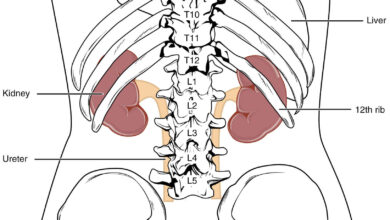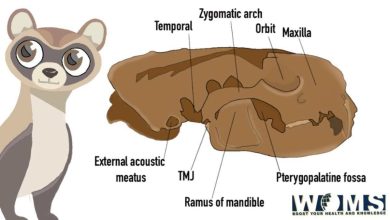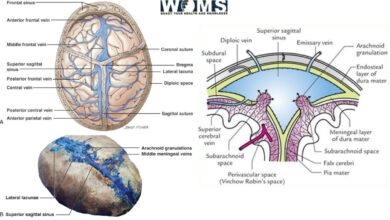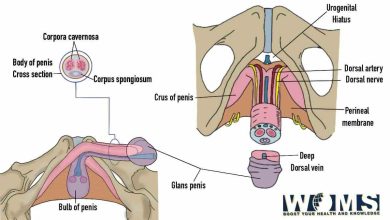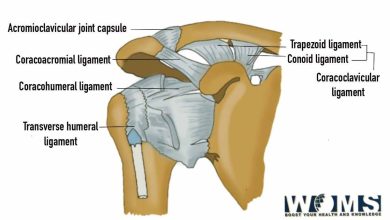Ascending Colon: Anatomy, Important Functions and Clinical Conditions
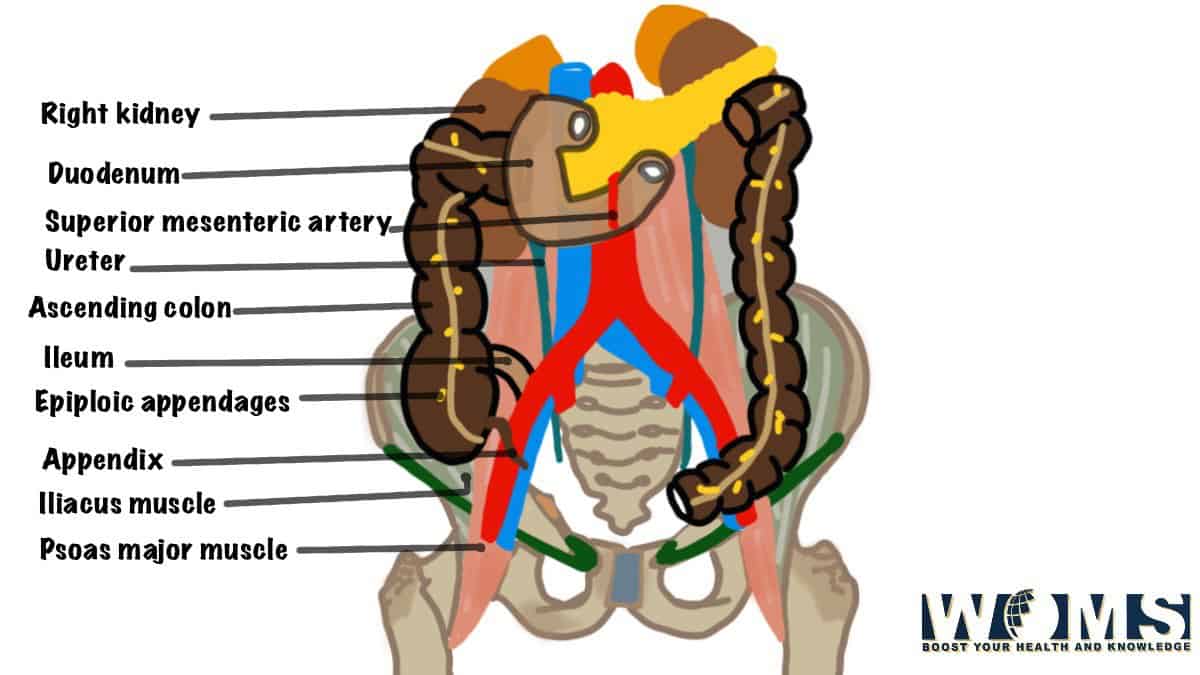
Ascending colon is the main starting point of the large intestine (colon) that connects the cecum and transverse colon. It is part of the gastrointestinal tract. Moreover, it is present between the termination point of the small intestine and the second part of the colon. It is also termed the right colon.
The large intestine is a continuous tubular structure. But it is divided into four main regions:
- Ascending colon
- Transverse colon
- Descending colon
- Sigmoid colon
Moreover, the ascending colon starts from the cecum and ends where the colon bends to start the transverse colon. This point occurs just below the liver and gallbladder for the confirmation of anatomical landmarks.
Anatomical location
It is a retroperitoneal structure that traverses superiorly in an ascending manner from the cecum. When it reaches the level of the right lobe of the liver, it bends at a right angle horizontally. This turning point is right colic flexure. It marks the starting point of the transverse colon.
Physical Properties
It is a part of the colon and the gastrointestinal tract. It is a point where food products catabolize into smaller products that the body can use easily. In addition, the ascending colon possesses the following physical properties according to the structural anatomy.
- It is 20-25 cm long with a diameter of 2.5 inches.
- Its inner walls are lined with smooth muscles that help to contract and pass the stool in a forwarding direction.
- It is covered by tissues and membranes to keep it in place.
- There are out pocketing or pouches along the entire length of the colon. These pouches increase the surface area and more absorption of the food products.
- The innermost layer contains mucus which contains goblet cells. Goblet cells secrete mucus that also lubricates the waste materials. In addition, it also enables the waste material to move along the colon.
- The further next layer, the submucosa contains nerves, blood vessels, and muscular. It contains smooth muscles for contraction.
- The outermost layer named serosa secretes fluids to reduce the friction for smooth muscle contraction.
Function of the Ascending Colon
Being the part of the large intestine, it performs several functions to maintain its prime importance. It is one of the main regions of the large intestine to absorb the nutrients from food products. There are some of the main functions to know its role in digestion.
- Ascending colon gets the partially digested food from the small intestine. It helps to absorb the water and electrolytes from this undigested food. In this way, it helps in the absorption of vital nutrients in a very precise manner.
- It is the point where liquid food turns into solid waste material by the complete absorption of water.
- There is a valve, the ileocecal valve, that separates the small intestine from the cecum. It helps to prevent the material from going back into the small intestine.
- It starts forming the waste material by processing the undigested food. In this way, it helps to form feces and moves the waste material along the length of the large intestine.
- Ascending the colon also helps to break the complex indigestible matters due to the presence of microbes including bacteria or fungi. These microorganisms are essential for the digestion of undigested material. It helps to get the nutrients that our body needs.
Histology
- Innermost layer mucosa – It is made of columnar epithelial tissue with long microvilli. The mucosa contains crypts of Lieberkuhn that contain goblet cells. Goblet cells secrete mucus to lubricate the waste material passing through them. Cells of mucosa absorb vitamins and water to transfer into the nearby blood capillaries.
- Deeper layer submucosa – It contains nerves, blood vessels, and connective tissue to support mucosa.
- Next layer muscular – It surrounds the mucosa and contains several layers of smooth muscles to move food through peristalsis. The pouches or haustra are formed by the out-pocketing of smooth muscles during contraction.
- Outermost layer serosa – It is covered anteriorly by the peritoneum. On the posterior side, it is covered by the areolar connective tissue. These tissues protect the large intestine from frictional effects due to body movements.
Blood supply
The ascending colon receives its arterial supply through the two main branches of the superior mesenteric artery.
- Ileocolic artery
- Right colic arteries
In addition, the ileocolic artery further divides into anterior cecal, posterior cecal branches, and colic arteries. These all branches supply arterial blood to the colon.
Moreover, it drains its venous blood to the ileocolic vein and right colic veins. These veins empty into the superior mesenteric veins.
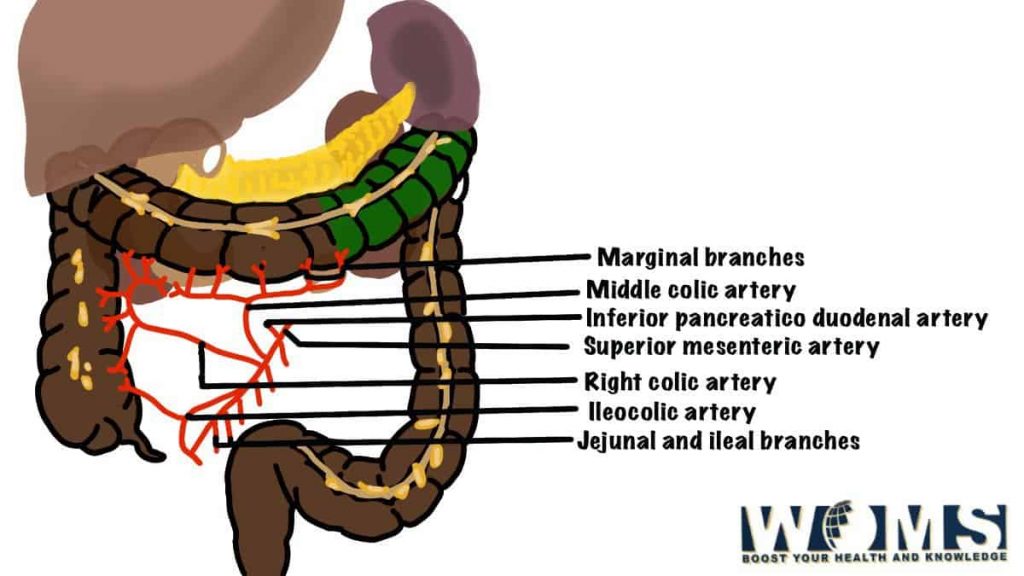
Nerve Supply
The ascending colon is innervated by the following nerves:
- Sympathetic innervation occurs through the superior mesenteric plexus.
- Parasympathetic innervation is through the vagus nerve, which is the 10th cranial nerve.
Lymphatic Drainage
It drains lymph into the associated lymph nodes. It drains into the superior mesenteric nodes.
Anatomical Relations
It is connected to various anatomical structures. There are various structures that lie anteriorly or posteriorly to it. Let us have a look at these structures.
Structures anterior to the ascending colon:
- Small intestine
- Anterior Abdominal wall
- Greater omentum
Structures posterior to the ascending colon:
- Right kidney
- Iliacus and quadratus lumborum
- Iliohypogastric and ilioinguinal nerves
Anatomical structures of the large intestine:
The large intestine contains several characteristic properties that differentiate it from other body structures.
- Omental appendices – these are the small pouches of the peritoneum which contain fat. These are connected to the surface of the large intestine.
- Teniae coli – these are the three strips of muscles that run longitudinally to the outer surface of the large intestine. These are also called mesocolic and omental coli.
- Haustra – the Teniae coli contracts to decrease the diameter of the large intestine. It produces sacs to form haustra.
These characteristic structures end at the rectosigmoid junction. It is the point where smooth muscles relax to completely merge with the rectum.
Clinical Conditions
There are several medical conditions that are associated with the ascending colon. In addition, there are also some generalized diseases that can affect any part of the large intestine. Let us have a detailed look at those medical conditions to understand better.
Ascending colon infection
Due to an imbalance in the microbiome, several infections may arise in the ascending colon. Infection may arise due to poor blood supply or any parasite leading to an inflamed colon. If it remains untreated, it may cause abdominal cramps, pain, or diarrhea.
Colon Polyps
These are the stalk-like growth originating from the inner wall of the intestine. They hang into the interior lumen of the colon. If not treated properly, they enlarge enough to block the lumen. In this way, it can affect the transfer of the waste material.
Polyps are indicative of future malignancy. Polyps should be diagnosed and treated as soon as possible to avoid any morbidity.
Diverticular Disease
It is a disease in which out-pocketing develops in the lining of the colon. It is common among people over 40. These out-pocketing may not induce any symptoms until they get infected. An infected condition is known as diverticulitis. Diverticulitis may cause symptoms like nausea, fever, abdominal pain, or diarrhea. Antibiotics are usually used to treat this infectious state.
Inflammatory Bowel Disease
There are three main diseases that stimulate the inflammation of the large intestine.
- Crohn’s disease
- Ulcerative colitis
- Intermediate colitis
These diseases can affect the ascending colon and may cause ulcers in the digestive tract. The most common symptoms include intestinal bleeding, simple diarrhea or bloody diarrhea, and abdominal cramps.
Colon Cancer
Colon cancer may arise in the ascending colon. It remains undiagnosed until it reaches the advanced stages. When feces go through the ascending colon, it is usually in liquid form. Therefore, it can bypass the tumor without causing any symptoms. Colon cancer reaches the severe partially or completely blocking the lumen. These tumors are usually treated by hemisection or complete resection surgeries. Chemotherapy or radiotherapy may provide benefits in the management.
Frequently asked questions (FAQs):
Is it possible to live without an ascending colon?
Yes, there are some medical conditions that require the complete or partial resection of the ascending colon or large intestine. Large bowel resection is one of those procedures to excise the damaged or diseased colon. One of the portions is removed, and the endpoints are stitched together to maintain continuity. This is known as anastomosis.
At which side of the body, does the ascending colon locate?
Ascending colon is present on the right side of the abdomen. In addition, it starts from the cecum and then forwards in a superior direction. Then, it turns left at a 90° angle to meet the transverse colon.
